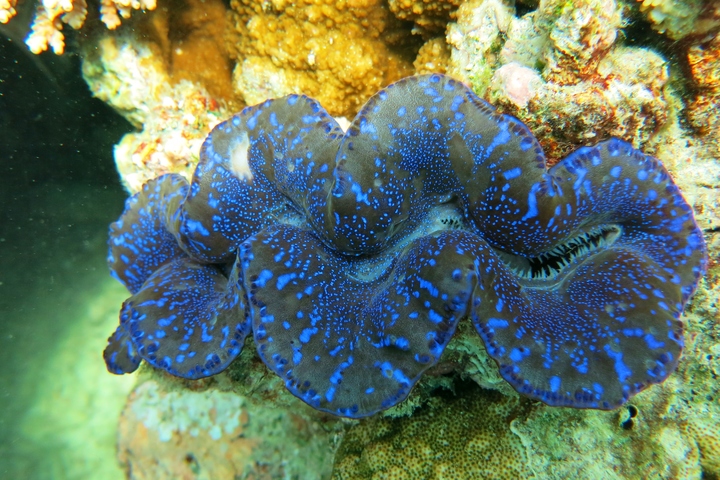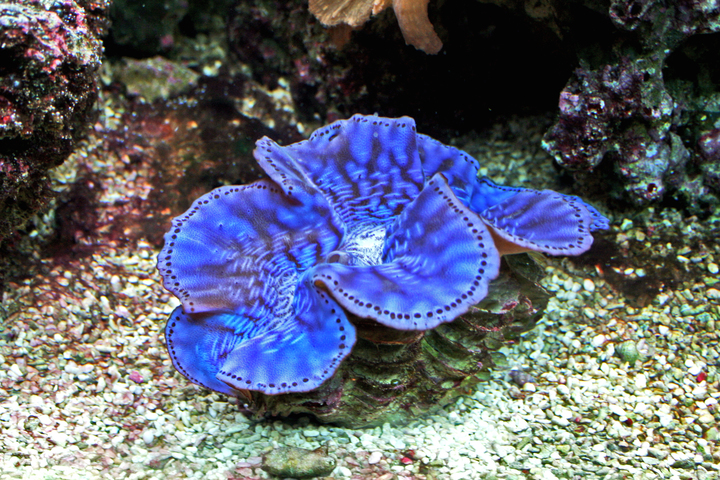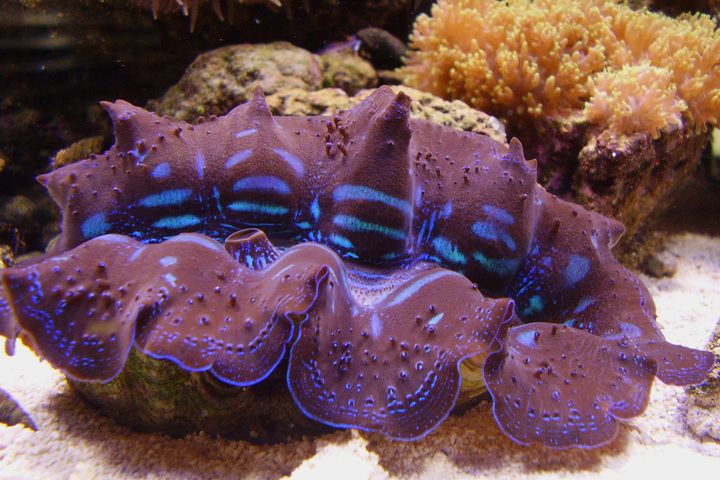Tridacna maxima




| Latin name | Tridacna maxima |
|---|---|
| Local name | Maxima clam |
| Family | Tridacninae - Tridacna |
| Origin | East Indian Ocean, West Indian Ocean, Australia, The Red Sea, Indonesia, Central/West Pacific |
| Max length | 41 cm (16.1") |
| Minimum volume |
200 l (53 gal) |
|---|---|
| Hardiness |
Delicate |
| Suitable for aquarium |
Suitable with care |
| Reef safe |
Always reef safe |
| Aggressiveness | Peaceful |
| Mostly |
Phytoplankton |
|---|
This species demands a high water quality.
Amongst other things it means, that water must be properly oxygenated.
This species requires bright illumination.
This species can be bred in captivity, one can therefore consider asking your local fish store for a captive bred specimen.
This Tridacna species is one of the smaller species. It is more challenging to keep than Derasa.
Maxima clams should be placed on a rock with bright illumination.
These large clams are often interesting because of both size and colour.
Tridacna clams typically are easy to keep, if one has powerful lighting and good water quality. The calcium level of the water should be between 400 and 440 ppm, as this allows the clam to build up its shell. One should however avoid fish and invertebrates that might damage the clam.
Small clams (<4 inch or <10 cm) need a diet of phtytoplankton until they have grown. Larger specimens derive most of their nutrion from photosynthesis, but it is still beneficial to supplement with phytoplankton.
Tridacna clams will become attached, to varying extents, to the rocks or sand over time. Be careful not to damage the foot of the clam when moving them. Placing them in a ceramic bowl made for this purpose might be handy if you need to move the clam.
Pyramid snails often target clams, so make sure to check for these at the foot of the clam. Some types of Wrasses are effective at eliminating these snails.
When choosing a clam, it's good to check that it reacts suddenly to shadows by retracting. If it stays open or has trouble retracting there the specimen isn't healthy.
James W. Fatherree. 2015. On the Giant Clams Tridacna mbalavuana and T. squamosina - Advanced Aquarist - (English)
Bob Fenner. Bivalves: Clams, Oysters, Mussels... Class Bivalvia - Wet Web Media - (English)
Ronald L. Shimek. 2004. Marine Invertebrates (PocketExpert Guide) - TFH Publications / Microcosm Ltd. - (English)
James W. Fatherree. 2007. A Close-up Look at Tridacna crocea - Reefkeeping Magazine - (English)
James W. Fatherree. 2012. Aquarium Invertebrates: A Look at the Giant Clam Tridacna maxima - Advanced Aquarist - (English)

